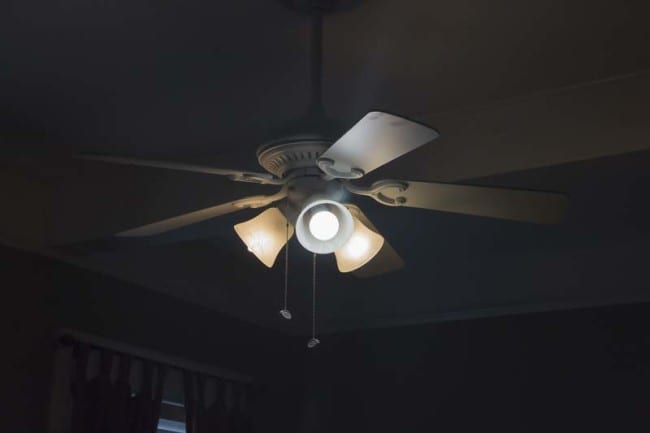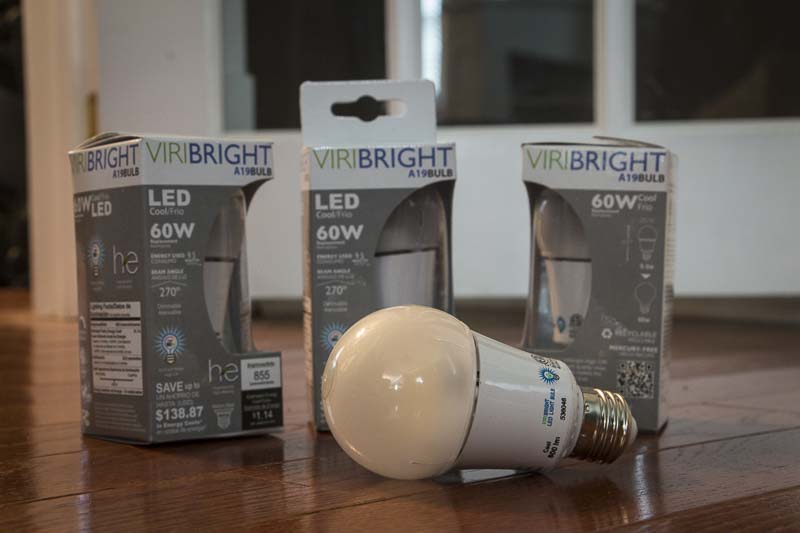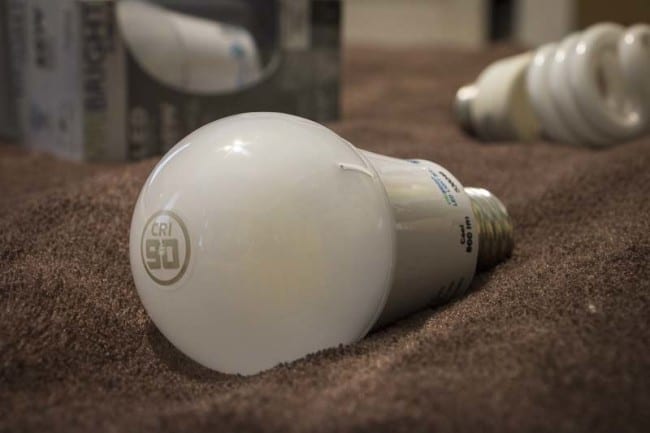We wanted to chime on the recent drop in LED bulb pricing that seems to be sweeping the nation. Finally, you can get LED bulbs for your home for less than $2/each. In our opinion that makes now the time to upgrade all of the lighting in your home—it’s finally cost-effective to do so. With the move to LED comes the choice of what brand to select—and there’s no end in sight to the number of companies willing to fill the void (and your shopping cart). We were recently given the opportunity to try out some Viribright LED light bulbs, so we threw them up in the nearest rooms and evaluated them next to our incandescents.
Viribright LED Light Bulbs Features
The Viribright LED light bulbs are designed to run much cooler than incandescent bulbs. More energy is converted to light than heat, so you save an astronomical amount of energy making light. These are high efficiency light bulbs as a result, and should save you as much as 85% on your electricity for that particular fixture. Here’s the math on that:
Cost for a 60W Incandescent Bulb to Run for 1000 Hours
- Cost assumption = $.10 per 1 kWh (that’s ten cents for each 1000W used each hour)
- Using 60 Watts = .06 kWh
- .06 kWh x $.10 = $.006 to run a 60W light bulb for 1 hour
- Cost for 1000 hours = $6.00 (plus another bulb since it probably won’t last 1000 hours)
Cost for a 9.5W Viribright LED Light Bulb to Run for 1000 Hours
- Cost assumption = $.10 per 1 kWh (that’s ten cents for each 1000W used each hour)
- Using 9.5 Watts = .0095 kWh
- .0095 kWh x $.10 = $.00095 to run a 9.5W Viribright LED light bulb for 1 hour
- Cost for 1000 hours = $0.95
You can take the math out as far as you want, including the cost for the bulb, the replacement time, and the life expectancy (a typical incandescent light bulb last for just 800 hours on average while an LED bulb can exceed 25,000 hours).
The Viribright LED light bulbs have a high efficiency output of 90 lumens per Watt (90 LPW). Some Cree LEDs are getting upwards of 140 LPW, but for residential use 90 LPW is a good average. These bulbs are also dimmable and compatible with common household dimming systems as well as Viribright BMII 300W dimmers. Viribright LED light bulbs are spec’d to last 25,000 hours and have a shatter resistant design for safety (compare that to fluorescents which seem to love shattering and briefly spilling mercury vapor everywhere).
We also like that they have a traditional bulb shape and size, so you don’t have to worry about them fitting into the standard sockets or shapes that a typical 60W lamp would work with. One caveat is that these bulbs require ventilation, so they shouldn’t be used in totally enclosed fixtures.

The bulb we chose (there are literally dozens of light bulbs to choose from) was the LED A19 9.5W 855Lm E26 BMIIc 60W Replacement 4000K (SKU 750025). We like 4000K as it’s a nice bright white light that doesn’t tend towards either blue or yellow—it’s close to daylight (though technically that would be 6500K). From my observations, the color temperature designations for LED light bulbs seem to be skewed a bit towards blue. If you want a true daylight bulb, opt for a 4000K model. If you purchase 5000K or above in LED, you’ll likely see a blueish hue.
Dimmable or Non-Dimmable?
Before grabbing an LED light bulb you first have to decide whether you need the bulb to be dimmable. Because of the advanced electronics included within (these are more than just simple filaments), you’ll find that non-disable bulbs are much less expensive than their dimmable counterparts. There’s also the issue of an LED dimmer versus a standard incandescent dimming system or switch. Since LED light bulbs have a different power curve, dimmers configured specifically for LED lights can render a bit more dynamic range. With the Viribright LEDs, we recommend using their dimmers or another LED wall dimmer to avoid a sudden cut-off of light.
Conclusion
Overall, I found the Viribright LED light bulbs to have excellent light output and there are a ton of options to choose from. They do have one drawback, however, and it’s a real deal-breaker for me. The bulbs have a short delay before coming on. It’s a bit frustrating, and I use other LED bulbs that don’t exhibit this behavior. Still, if you can tolerate the .75 second delay, these LED light bulbs have excellent color and output. If Viribright can solve the delay issue these will really take off. The pricing for LED is finally right, so now’s the time to upgrade. If you’re still changing out incandescent light bulbs, it’s probably time to make the move to LED. The cost for these bulbs varies, but expect to see them between $7 and $18 each.




